Overnight in Hotel Simi
Located in the southwest of Switzerland, Zermatt is a car-free town and is a popular holiday destination for hiking, skiing, mountaineering, and visiting the famous mountains peak, Matterhorn. To get to Zermatt from Geneva, we first took a train from Geneva to Visp. At Visp, we took another train to Zermatt. The whole train journey from Geneva to Zermatt including transfers, took about 4 hours.
We arrived after 12pm and the weather was cloudy and rainy. We also found out that the Matterhorn Glacier Paradise was closed due to high winds and bad weather. Because of the cloudy weather, the famous Matterhorn was not visible from anywhere in Zermatt on the day we arrived. The only option we had for the rest of the day was to walk around Zermatt and enjoy the town and hope that the weather would clear up the next day. It is always good to have an extra day, especially when you are planning to visit a place or do an activity that is dependent on good weather. Some of the things we had planned to do in Zermatt had to be canned because of the weather.
- Gornergrat – Could not do this because of bad weather
- Wandering the town of Zermatt
- St. Mauritius Church
- Matterhorn Museum
- Matterhorn Glacial Paradise
Gornergrat – One of the things to do in Zermatt is to ride the scenic Gornergrat railway to Gornergrat from where you get to see jaw-dropping views of the Matterhorn, the Gorner Glacier in the Alps, and Dufourspitze which is Switzerland’s highest peak. If you feel energetic, you can also hike the trail to Riffelberg. It’s an easy, downhill walk and once in Riffelberg, you can take the cable car (Riffelberg Express) or the Gornergrat railway back to Zermatt. The visit to Gornergrat and the hike to Riffelberg takes 3 to 3.5 hours and the round-trip cost was CHF 66 with Swiss Travel Pass. We decided to skip this activity, since the weather was cold, rainy, and windy.
Wandering the town of Zermatt – As mentioned before, Zermatt is a car-free town and perfect for a relaxed stroll. Bahnhofstrasse is the main road that runs through the town and is lined with shops, restaurants, and hotels.
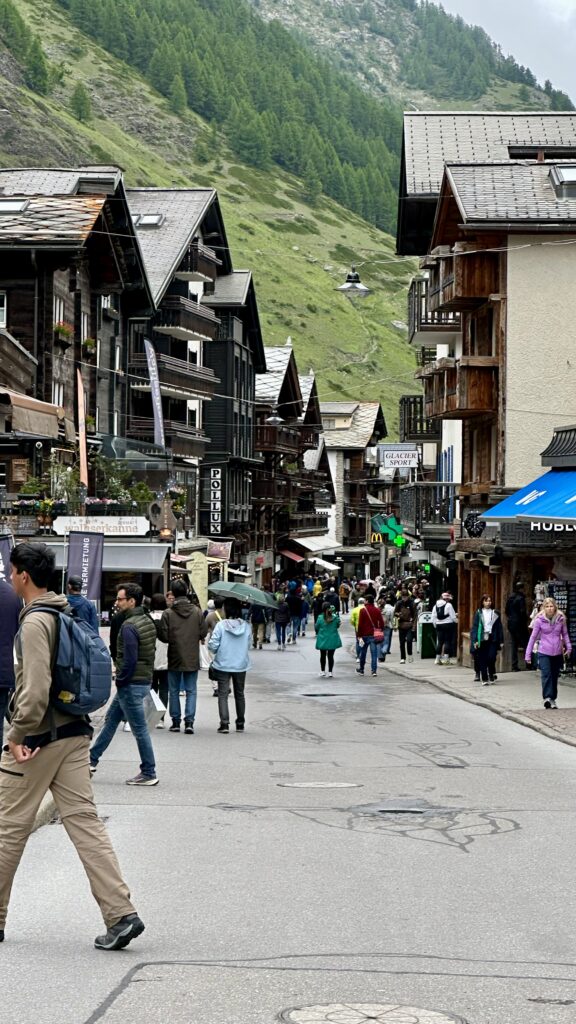
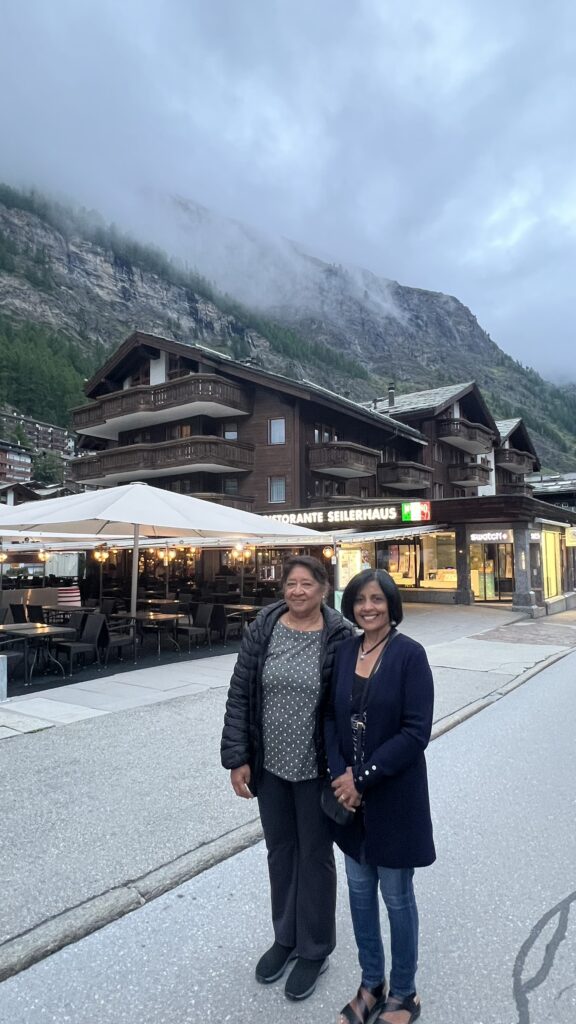
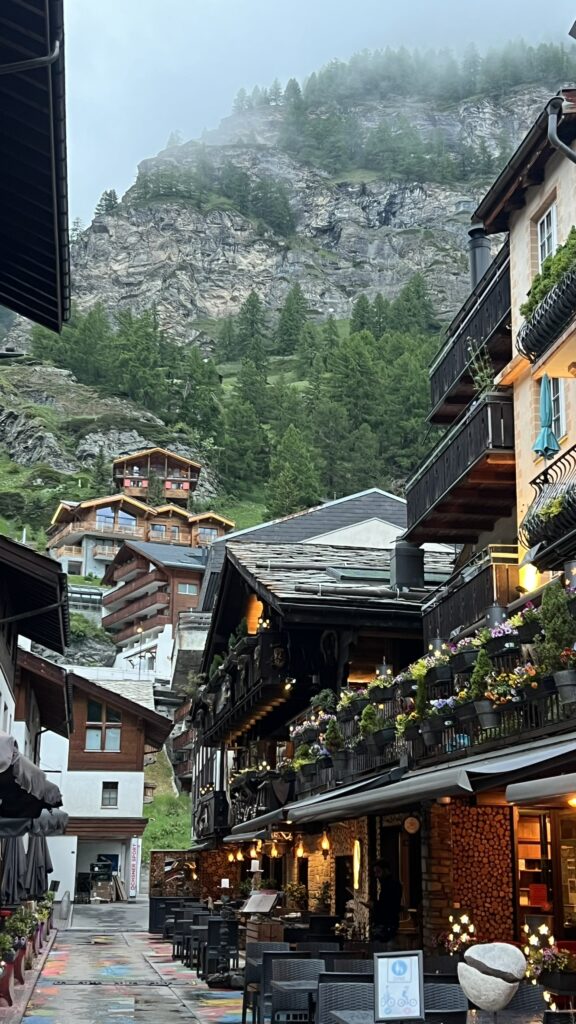

The Kirchbrücke is a bridge that crosses river Matter Vispa. On a clear day, you get a wonderful view of the Matterhorn from the bridge.
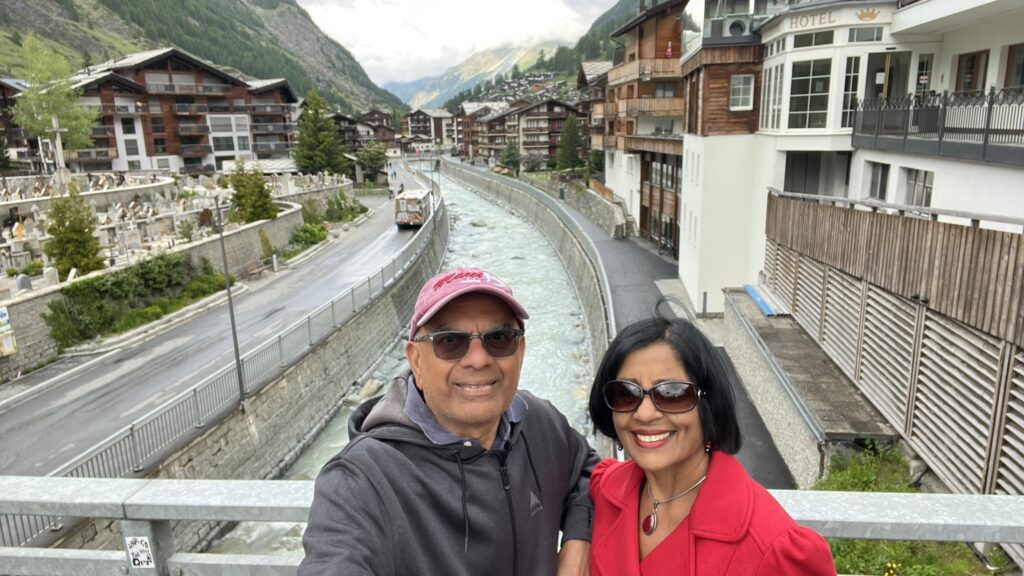
Hinterdorfstrasse – As you walk through the town, take a detour down Hinterdorfstrasse. This short street is home to the traditional buildings that are found around the Valais regions of Switzerland. Traditional Valais houses often feature a stone base with upper levels constructed of long-lasting wood, typically larch. A key characteristic is the ability to add storeys as needed to accommodate growing families.
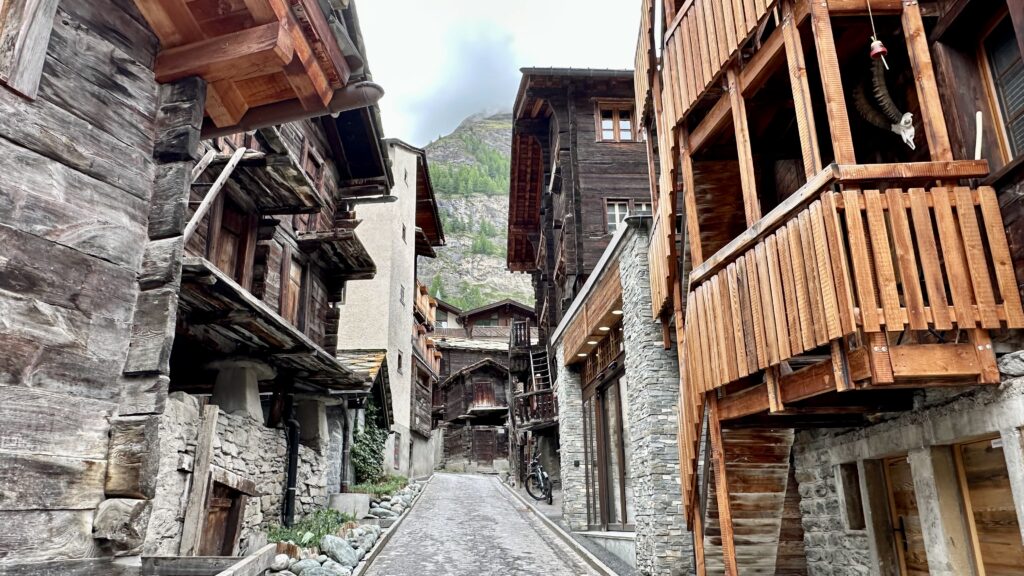
Buildings on this street date from between the 16th and 18th centuries, built of the particularly dense local larch wood and with roofs of stone slab to withstand the weight of snow. These storehouses have large circular slabs of stone on the supporting posts to deter mice. The cats that wander these streets also help with that job now.
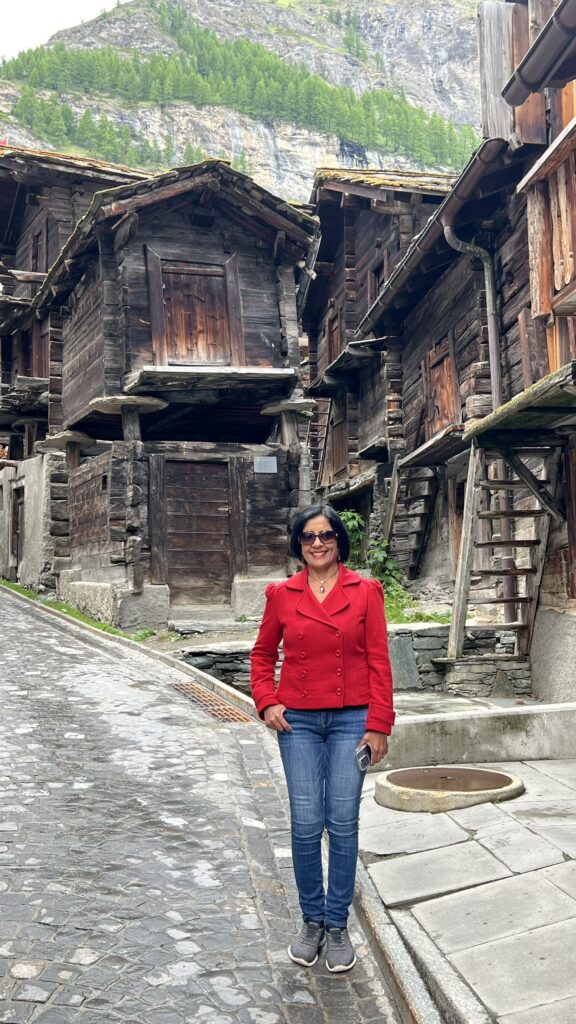
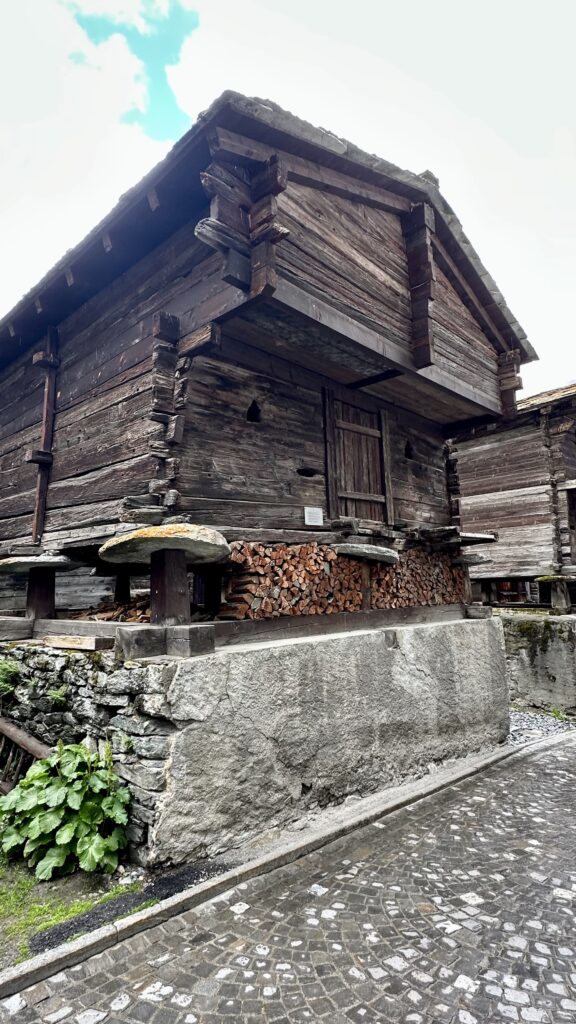
St. Mauritius Church – The first historical mention of this church dates back to the 13th century, with the current building probably built in the 16th century in the Italian style. The church underwent the last major renovation in the 1980s. Inside the church, it is worth paying attention to the 17th-century altars and a painting on the ceiling with a Noah’s Ark motif.
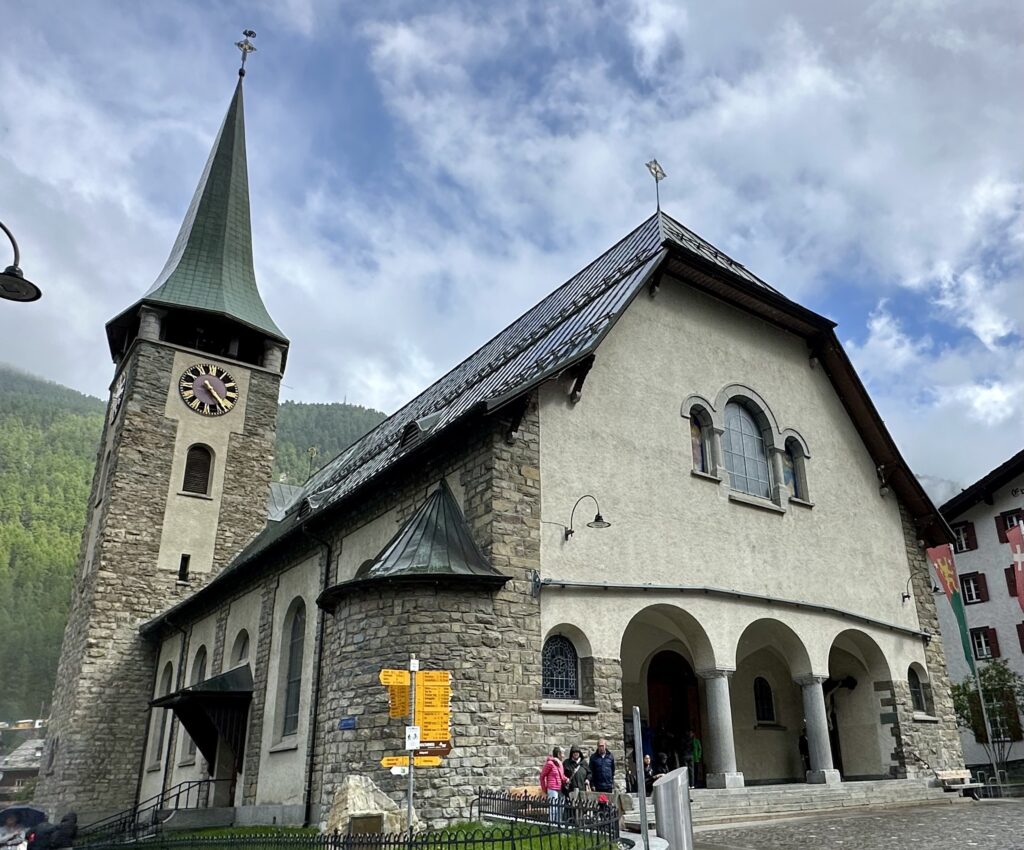
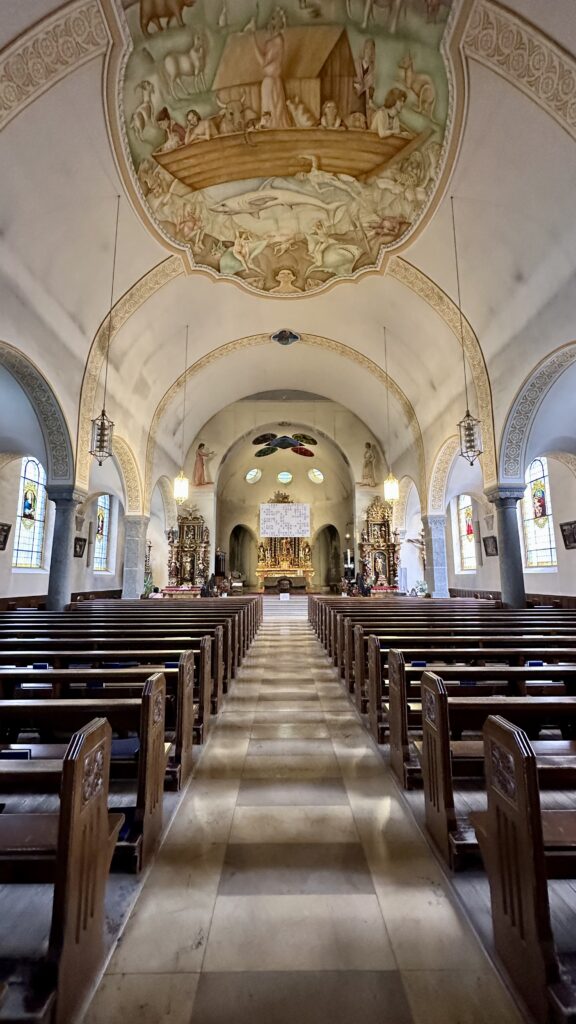
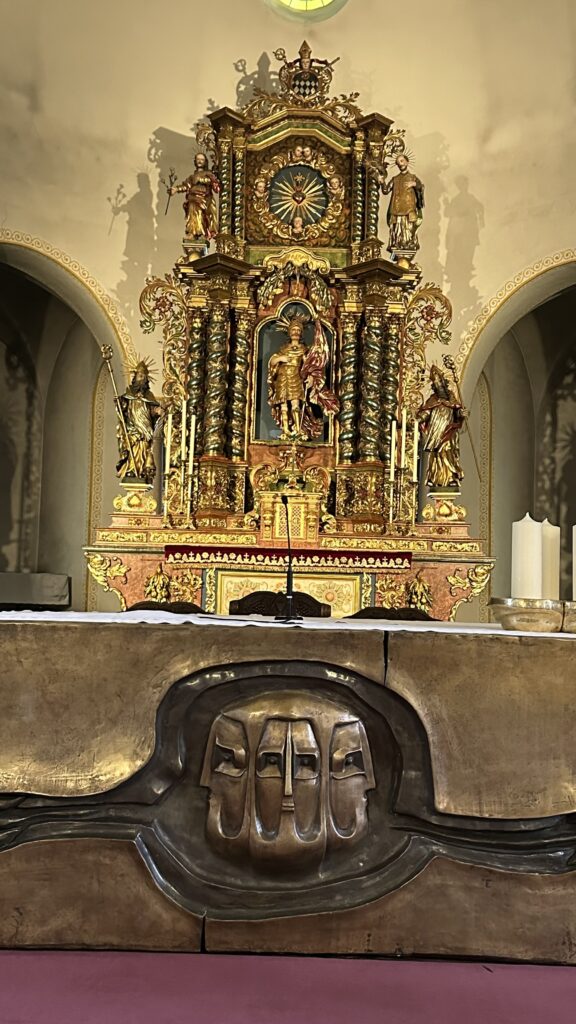
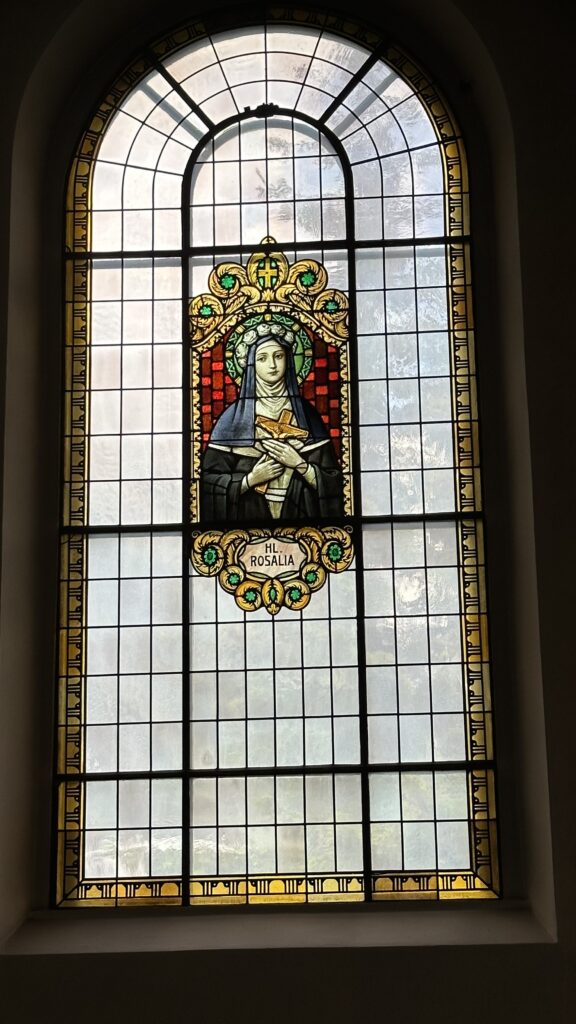
Matterhorn Museum – The main theme of this museum is about Matterhorn. The museum is in the form of a reconstituted mountain village consisting of 14 houses (church, hotel, huts and granaries), and relates the history and development of tourism in the Zermatt area, including the story of the first ascent of the Matterhorn by Edward Whymper and party.
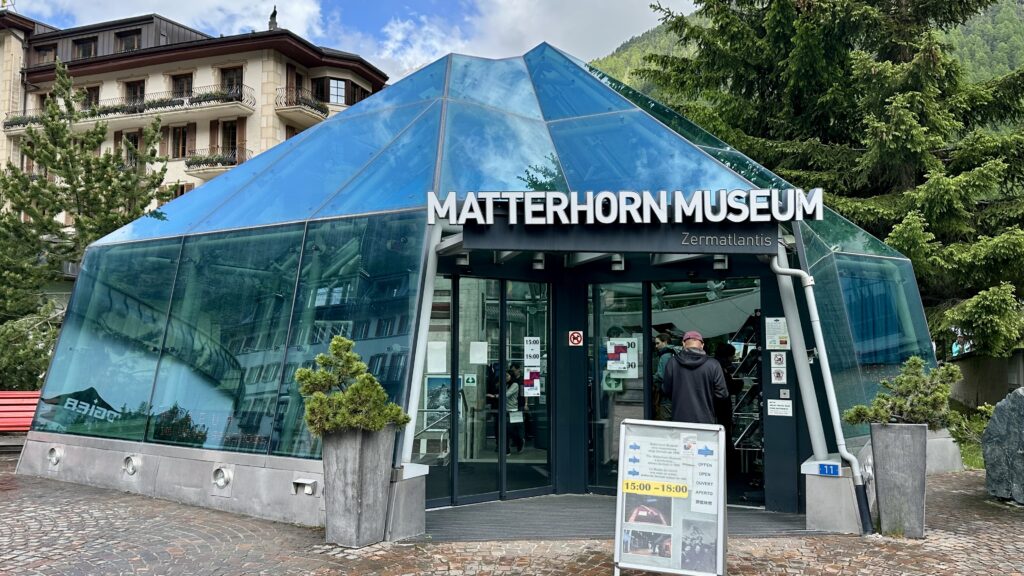
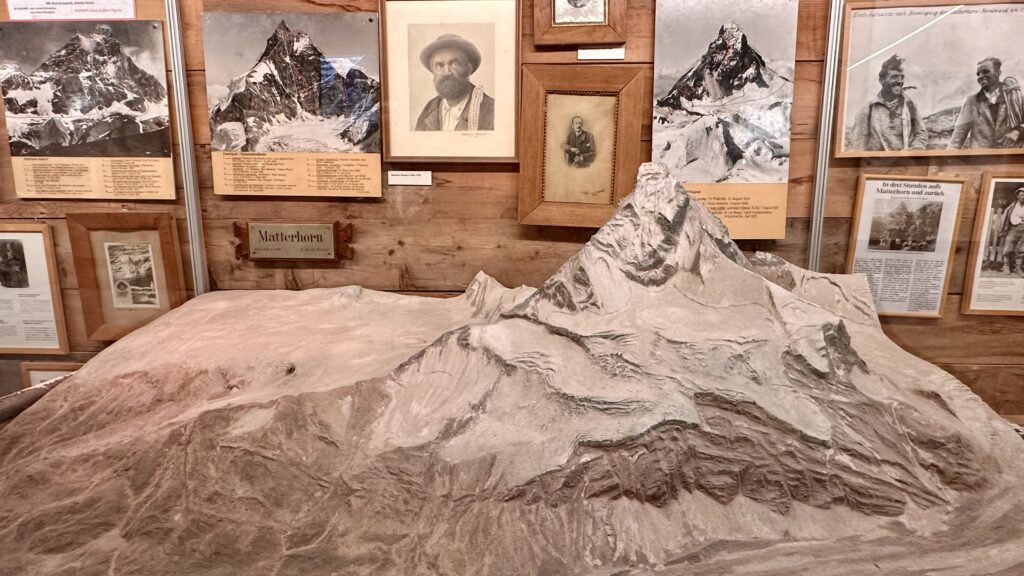
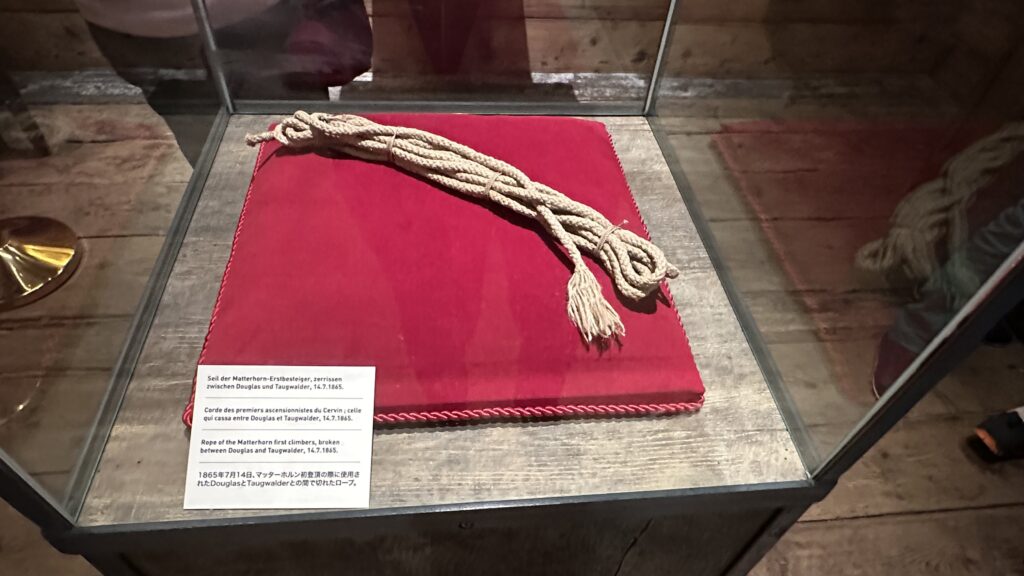
Matterhorn Museum, The first guest house – The few travellers who visited Zermatt from the end of 18th century were mainly scientists who were interested in the geology and flora of Zermatt. In 1838, the local surgeon built the first guest house with 3 beds.
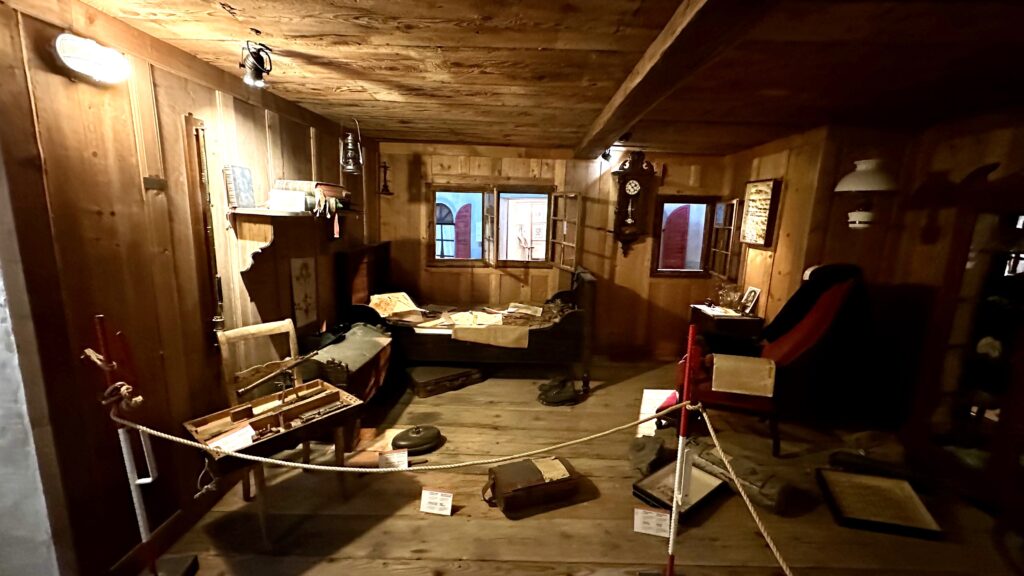
Matterhorn, The story behind the first ascent – The story and the controversary that followed can be experienced dramatically at this museum.
- In 1865, Edward Whymper, a British mountaineer, led a party of seven climbers to attempt the Matterhorn’s summit.
- The group included Francis Douglas, Charles Hudson, Douglas Hadow, Michel Croz, and the 2 Zermatt guides Peter Taugwalder and his son.
- The ascent went great and the group reached the summit at 1:40 pm on July 14th.
- The Descent Tragedy –
- The descent proved to be far more treacherous than the ascent. Douglas Hadow slipped, causing him to fall and pull down Michel Croz, Charles Hudson, and Francis Douglas with him.
- The rope connecting the climbers broke, sending the four men plummeting down the north face.
- Whymper and the two Taugwalder guides survived the descent.
- Aftermath and Controversy –
- Whymper and the Taugwalders faced accusations of cutting the rope to save themselves, but an inquiry found no evidence to support the claim.
- The tragedy brought both fame and controversy to the village of Zermatt and also led to a public backlash against mountaineering.
3 days after Whymper and party reached the summit, Jean-Antoine Carrel and Jean-Baptiste Bich reached the summit from the Italian side.
Matterhorn Glacier Paradise – The next day turned out to be a great day with clear skies and we were ready to visit Matterhorn Glacial Paradise early in the morning. At 3,883m (12,740ft), Matterhorn Glacier Paradise is the highest cable car station in Europe. To get there, you will ride a series of cable cars and during the months of May-June, the only way to get to Matterhorn Glacier Paradise is as follows –
- Zermatt to Furi – A Cable Car runs between Zermatt and Furi, every 30 minutes. The time taken for the ride is about 5-7 minutes. The cable car has a maximum capacity of 100 and it was jam packed with that many people.
- Furi to Trockener Steg – This ride is 7-8 minutes long and we travelled in a similar sized Cable Car, jam packed with 100 people.
- Trockener Steg to the summit – You will board the futuristic cable car, called the Matterhorn Glacier Ride, for the final leg to the summit which takes about 8 minutes. Each car holds a max of 8 people and we had place to sit and enjoy the ride
As we rode the cable cars to the summit, we got a clear and stunning view of Matterhorn.
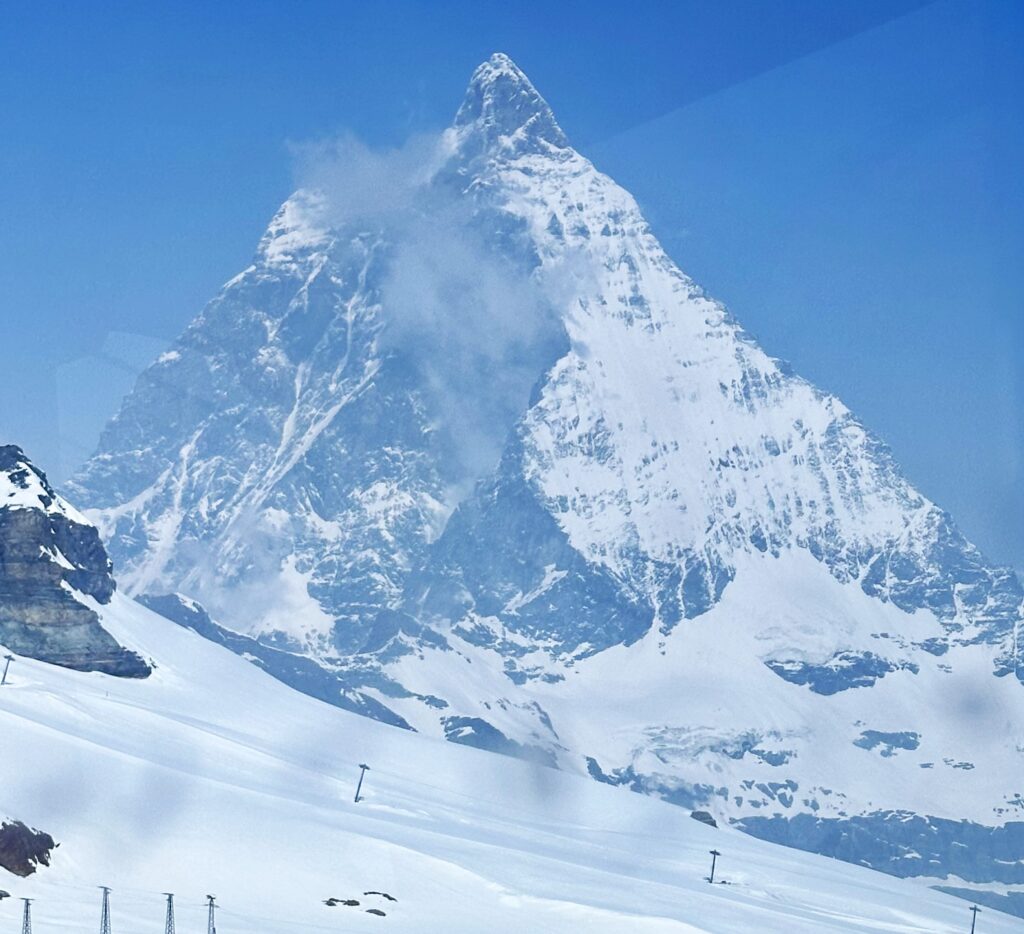
The Viewing Platform – After we got off the cable car, we found our way towards the viewing platform. The viewing platform is accessible with a short climb of around 10-15 steps and provides a panoramic views of the surrounding landscape. At this point, you are standing at 3,883m and have 360° views over the Alps. It was really cold and windy and my eyes was watering, but I was excited to see Matterhorn and the surrounding landscape. You get a view of Matterhorn from a different angle here.
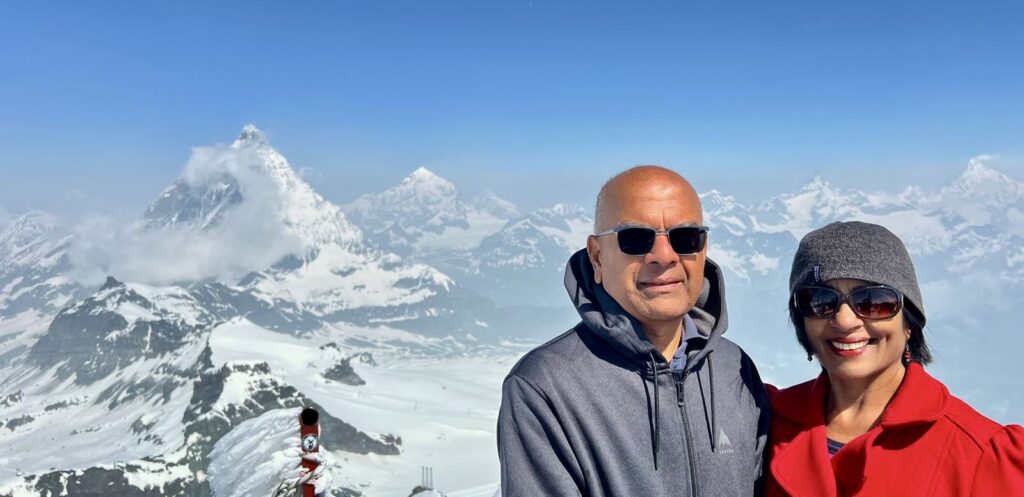
Breithorn mountain range – On the viewing platform, if you look in the opposite direction you will see another mountain peak called Breithorn. Breithorn sits on the border between Switzerland and Italy. At a height of 4,164m, it is one of the highest peaks in the area and it is one of the easier peaks to summit in the Alps. This 3.5 mile round trip hike which starts and ends at Matterhorn Glacier Paradise, takes roughly 3 hours with an elevation gain of 407m. You need to be super physically fit to do this hike as it is a challenging one.
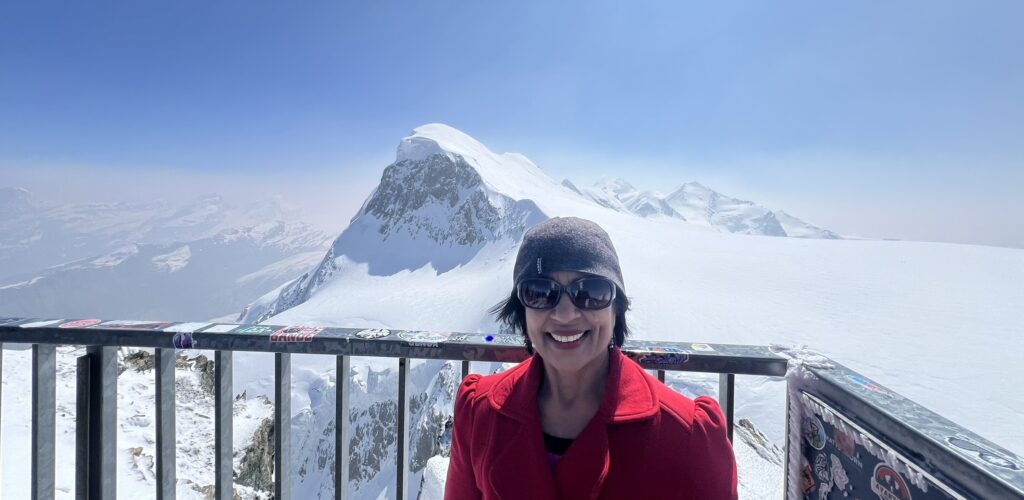
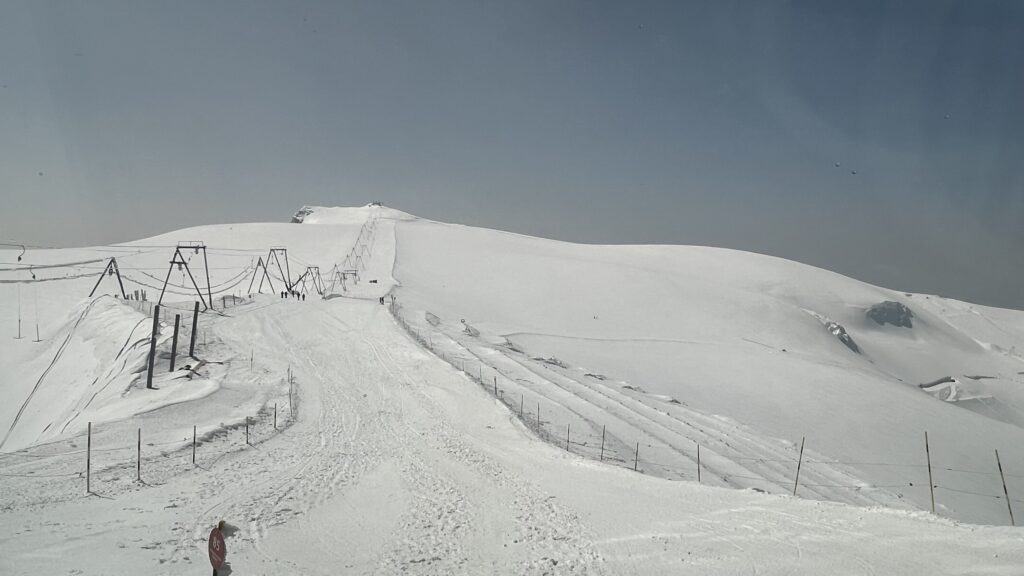
After visiting the viewing platform, we spent some time in the warm cafeteria. There is also a cinema lounge which plays short film clips that showcase the beauty of this alpine world. You can also go out and walk/play on the snow for a bit. We spent about an hour at the top.
On the way down, we stopped at Trockener Steg station from where we got some stunning pictures of Matterhorn. It was not as cold here as in Matterhorn Glacier Paradise.
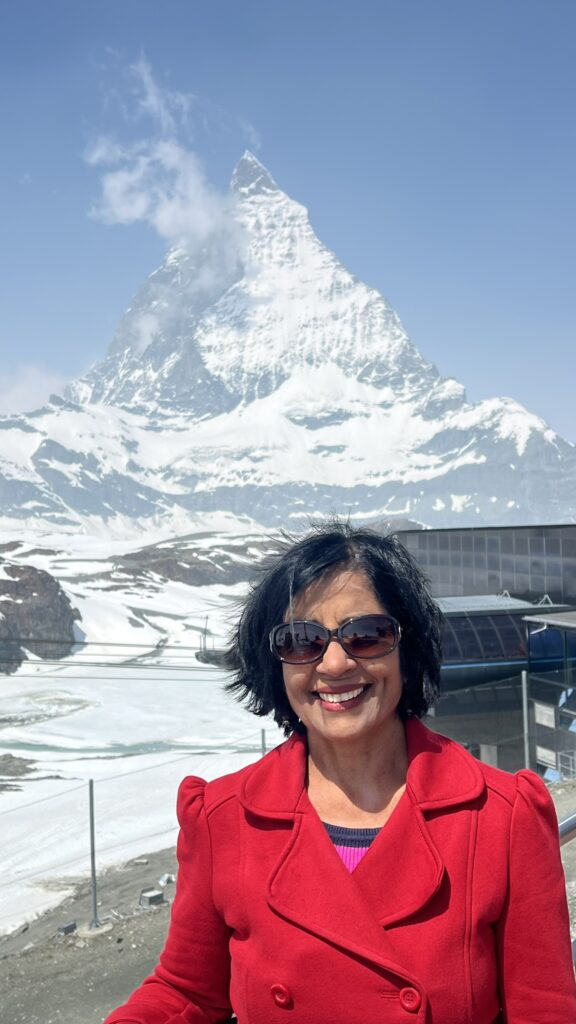
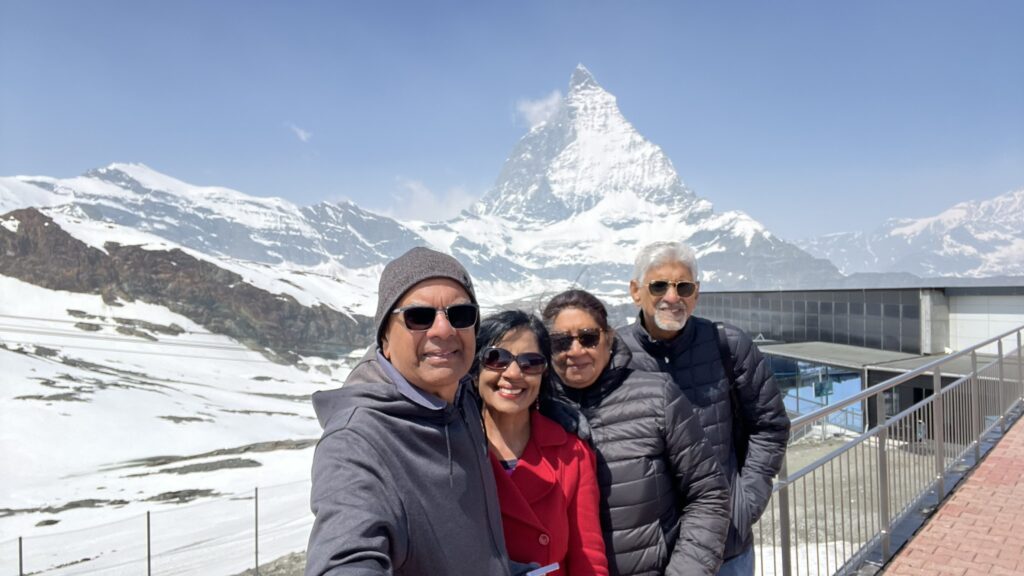
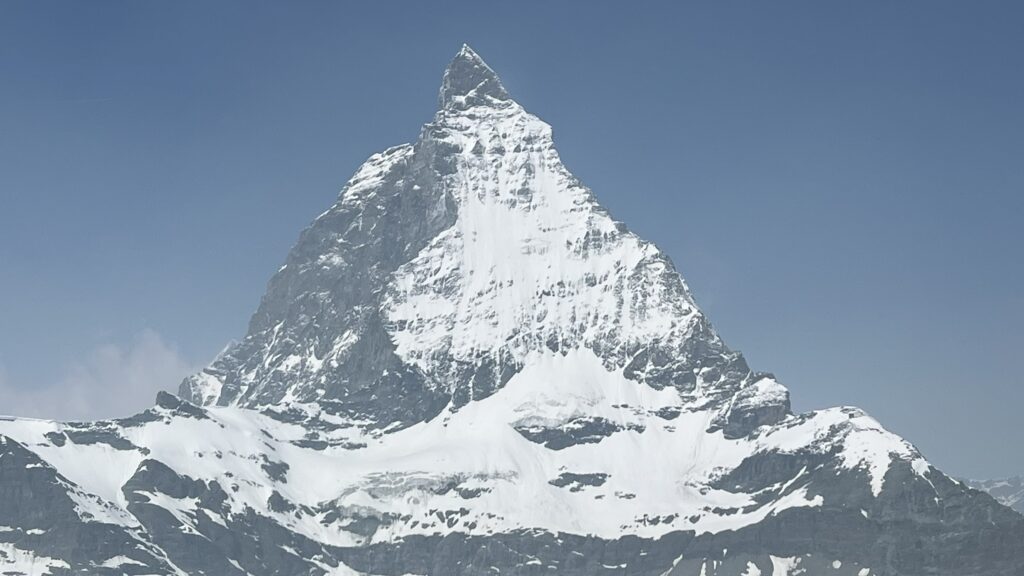
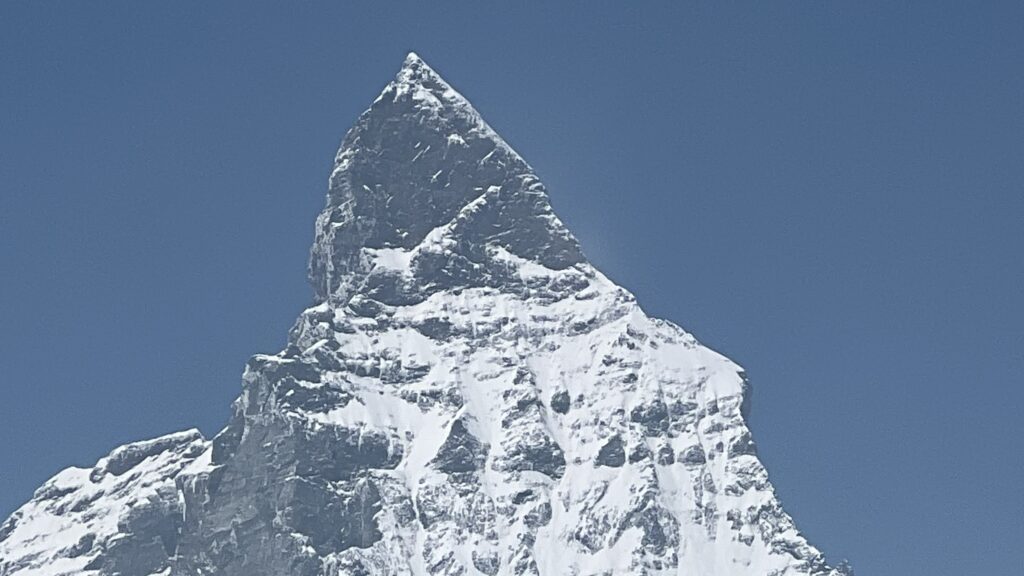
We got a great view of Matterhorn from Zermatt.
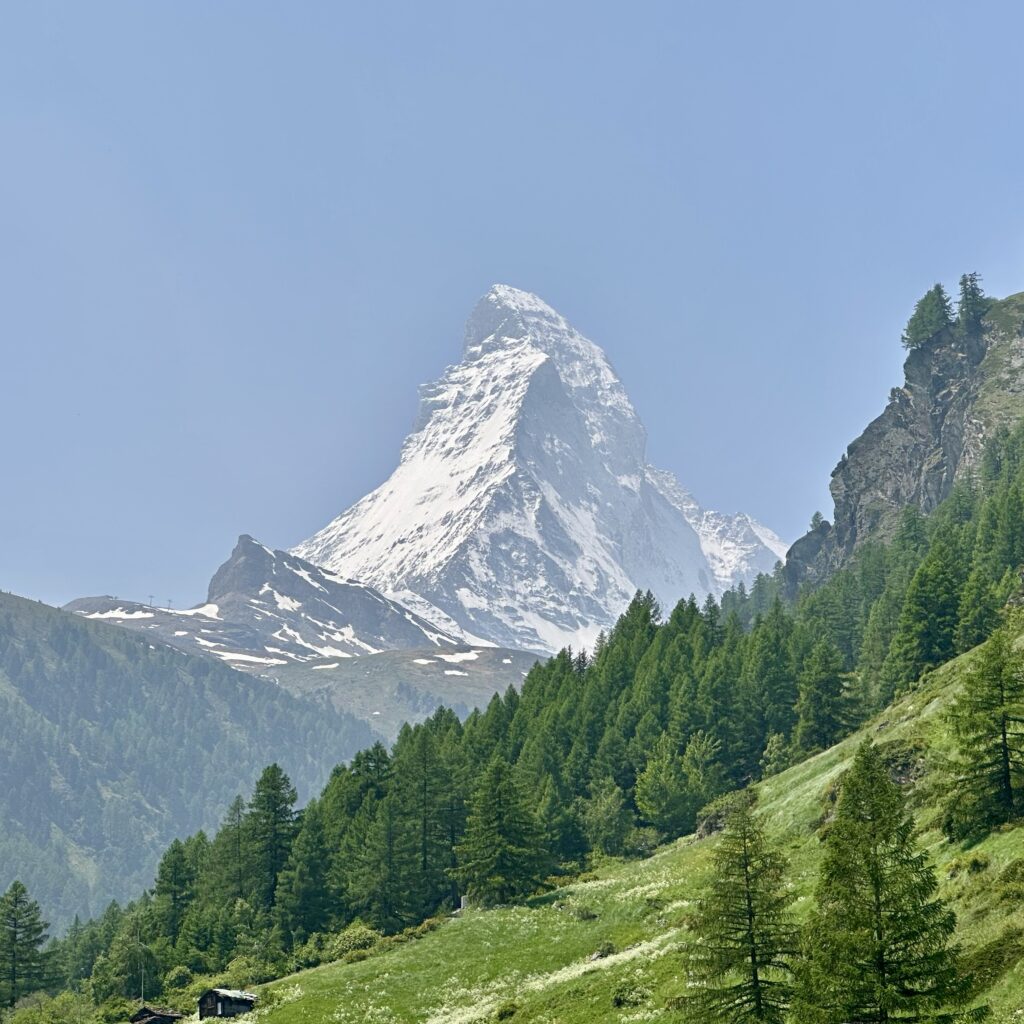
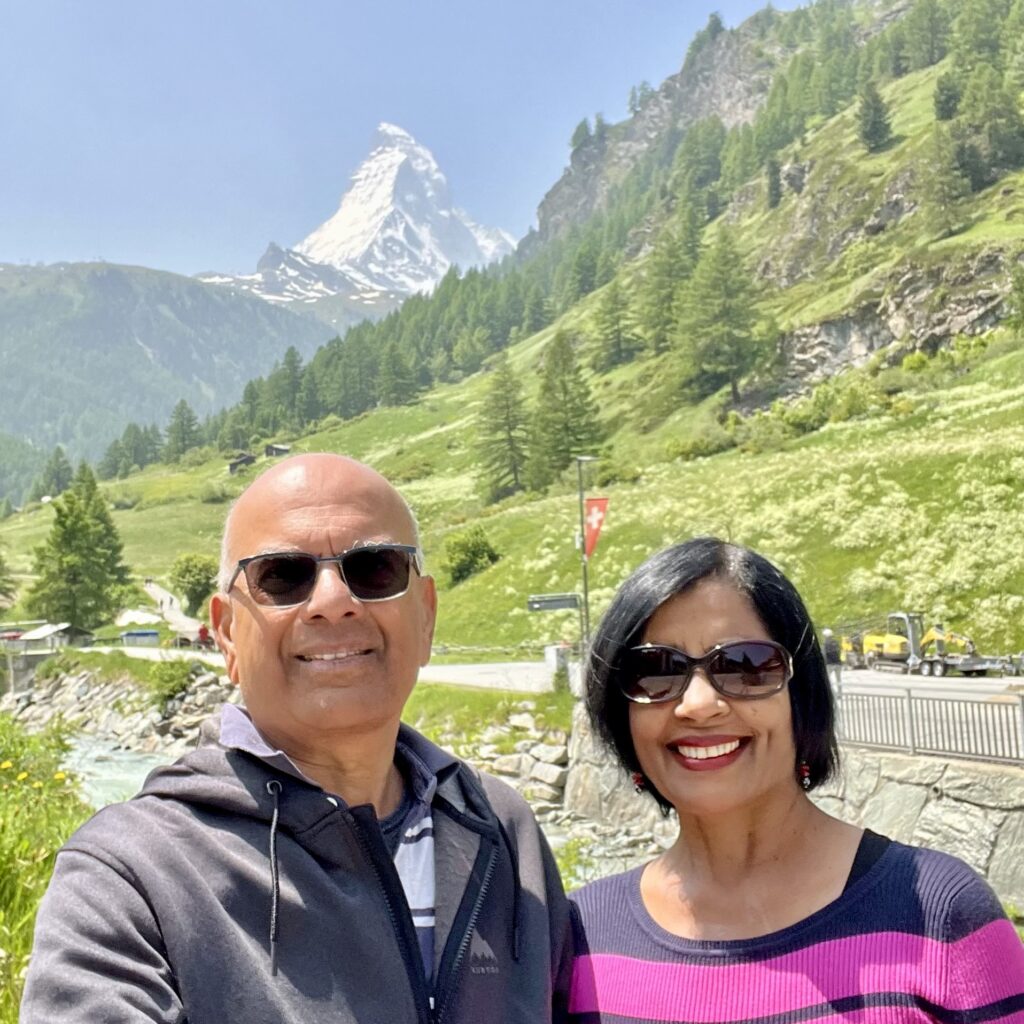
Cost of round trip ticket to Matterhorn Glacier Paradise – Since we had the Swiss Travel Pass, we paid half price which was CHF 57 (June 2025)